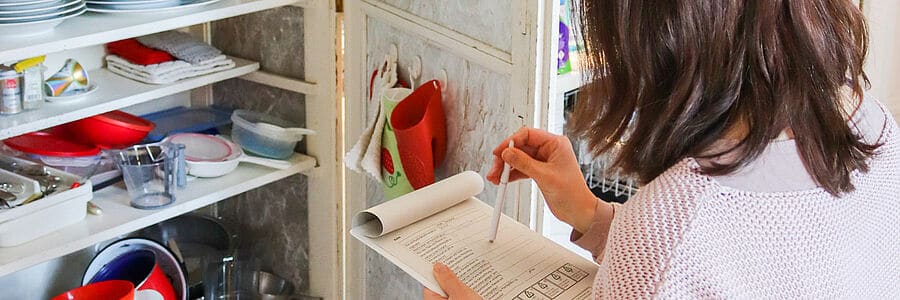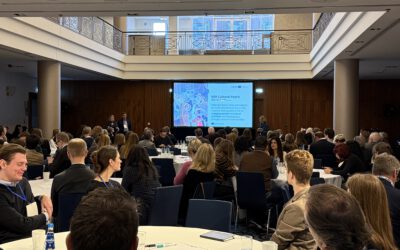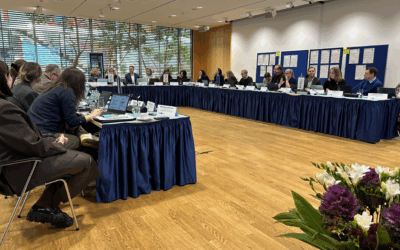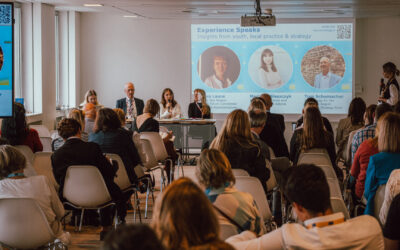The NonHazCity projects are a great example of how Europeans with smart ideas successfully cooperate to turn good solutions into common practice. Environmentalists, public officials and researchers from eight countries demonstrate how we can reduce the amounts of hazardous substances that enter the environment from sources that cannot be controlled by traditional water treatment, e.g. offices, schools, recreational facilities and businesses. Read here about the household check – a unique tool to reach out to private households and to initiate better consumption decisions. The concerted approach of NonHazCity is innovative and far-reachig which is why the projects are flagships of the EU Strategy for the Baltic Sea Region.

©Baltic Environmental Forum Germany / Tim Barabas
An everyday cocktail of hazardous substances
More and more hazardous chemicals can be found in our seas. They have difficult names like phthalates, bisphenol A, alkylphenols, PFAS etc. They are added to materials as softeners, stabilizers or flame retardants to shape the products’ function. These chemicals can accumulate not only in the environment but also in humans to toxic levels, they might lead to cancer or affect fertility. Legislation on chemicals makes sure that individual products are safe, but it does not yet consider that humans and the environment are nowadays exposed to a cocktail of hazardous substances in their everyday lives. Out of those emissions of hazardous substances that enter the Baltic Sea, about half come from households, businesses and municipal entities.
Consumers can make a difference
Consumers use a wide variety of products in their households which may contain harmful chemicals: cleaning detergents, cosmetics – but also solid articles like furniture, clothes, flooring materials etc. Most people do not know that here are harmful chemicals in those articles. “The key to reducing the hazardous substances mentioned above is: let’s not buy them, let´s make our lifes tox-free“, highlights Heidrun Fammler of the Baltic Environmental Forum. If people knew more about hazardous substances in products, they would buy less harmful ones. But that’s not easy. And that’s why the NonHazCity project was launched by the municipality of Stockholm together the Baltic Environmental Forum and six other city administrations, several research institutes and water utility companies.
Systematic household checks to teach citizens
With EUR 2.8 million support from the European Union, the Interreg project NonHazCity has increased knowledge and pushed for real actions towards reducing hazardous substances. The NonHazCity project gave citizens in Stockholm, Turku, Pärnu, Riga, Gdansk and other cities around the Baltic Sea all the knowledge they need to make better consumption decisions – in their private and professional lives. The project partners visited households to help residents reduce their use of harmful chemicals: list products with harmful chemicals, teach how to recognise and rank products, help them find better alternatives. During a second home visit, the residents showed the project partners what they changed. On top of this, the project partners trained urban service providers such as hairdressers, cleaning services or hotels on chemical-smart procurement and worked with municipal administrations.
Quite some noise around the Baltic
Heidrun Fammler sums up the efforts: “We consulted 60 pilot households in several countries in depth to test if this is a suitable way to change consumption patterns: all of the residents felt more confident to avoid harmful chemicals and substituted some”. Furthermore, the NonHazCity partners addressed citizens in cities with an intensive information campaign: public events, information materials and media reporting. By 2019, NonHazCity has reached more than 15,000 citizens face-to-face and more than 150,000 persons via its social media. On top of this, NonHazCity trained and informed about 3,500 businesses and motivated municipalities to develop chemicals action plans. Interreg funding helped the NonHazCity partners to have a much stronger effect on European citizens because they can develop and use the same methods once and then bring it to many people in numerous countries at once.
More noise for a green Europe
Together with her strong partners from eight countries, Heidrun Fammler wants to move on with the idea: “We want all citizens in Europe to become chemicals-aware and to make their homes and workplaces tox-free”. This will give a strong signal to producers: we want goods without harmful chemicals!” This big task needs many more organisations and projects. Currently, the NonHazCity partners are developing a virtual reality household check in the follow-up project NonHazCity 2. And NonHazCity goes far beyond private consumers. The project wants to show what municipalities can do to reduce the amounts of hazardous substances released to the environment from their territories: to contribute by good house-keeping, to set up chemical action plans and to stimulate business to do so as well.
A project of strategic importance
 NonHazCity is a flagship of the EU Strategy of the Baltic Sea Region (EUSBSR) under the policy area HAZARDS, which aims at preventing pollution and reducing the use of hazardous substances in the Baltic Sea Region. Flagships under HAZARDS have a high macro-regional impact and deal with policy relevant issues while contributing to meet the objectives, indicators and targets of the policy area and the EUSBSR.
NonHazCity is a flagship of the EU Strategy of the Baltic Sea Region (EUSBSR) under the policy area HAZARDS, which aims at preventing pollution and reducing the use of hazardous substances in the Baltic Sea Region. Flagships under HAZARDS have a high macro-regional impact and deal with policy relevant issues while contributing to meet the objectives, indicators and targets of the policy area and the EUSBSR.
Policy area HAZARDS is coordinated by the Swedish Environmental Protection Agency with the support of the Swedish Chemicals Agency and the Swedish Agency for Marine and Water Management.
Story by Heidrun Fammler (Baltic Environmental Forum) and Stefanie Maack (Interreg Baltic Sea Region Managing Authority/Joint Secretariat)






